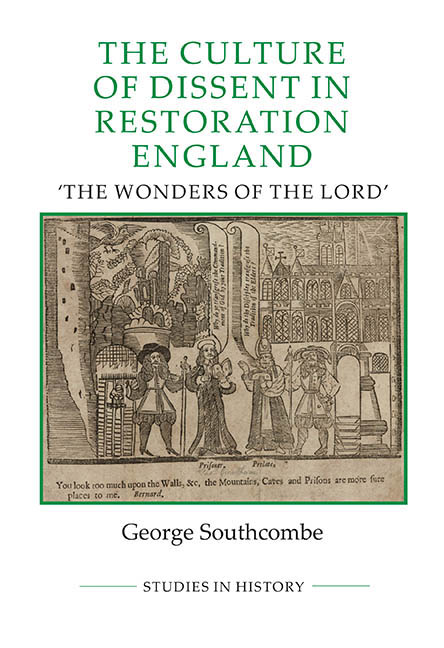Book contents
- Frontmatter
- Dedication
- Contents
- Acknowledgements
- Abbreviations
- Note on the text
- Introduction
- 1 Presbyterians, poetry and politics: Robert Wild: the ‘Scarlet Staine of Divinity’
- 2 Fluidity and fixity: the religious identity of Thomas Grantham
- 3 ‘Upheld by His Mighty Power’: John Whitehead and the Restoration Quakers
- 4 The paradoxes of dissent? Vavasor Powell and Benjamin Keach
- Conclusion
- Bibliography
- Index
2 - Fluidity and fixity: the religious identity of Thomas Grantham
Published online by Cambridge University Press: 19 March 2020
- Frontmatter
- Dedication
- Contents
- Acknowledgements
- Abbreviations
- Note on the text
- Introduction
- 1 Presbyterians, poetry and politics: Robert Wild: the ‘Scarlet Staine of Divinity’
- 2 Fluidity and fixity: the religious identity of Thomas Grantham
- 3 ‘Upheld by His Mighty Power’: John Whitehead and the Restoration Quakers
- 4 The paradoxes of dissent? Vavasor Powell and Benjamin Keach
- Conclusion
- Bibliography
- Index
Summary
An increasing recognition that the effect of the Reformation was not simply to create a set of binary oppositions – Protestants and Catholics, Anglicans and Puritans, churchmen and dissenters, winners and losers – has led to a renewed concentration on the question of religious identity. As was the case with Robert Wild, the processes of identity formation were undoubtedly complex and contested. Mark Goldie has written of the ‘porosity’ of Anglicanism and dissent, and in doing so has reasserted a position that was understood by contemporaries at the time. Richard Baxter wrote:
For some would have nothing to do with these imposed Pastors, but would in private attend their former Pastors only: Others would do both, and take all that they thought good of both: Some would only hear the Publick Sermons: Others would also go to Common Prayer where the Minister was tolerable: Some would joyn in the Sacrament with them, where the Minister was honest, and others would not.
Identities that once seemed concrete have been found to be mutable, and this mutability – rather than simply being the product of the Restoration religious settlement – has in many ways been seen as the keynote of England's long Reformation. Peter Lake concluded his mammoth investigation of post- Reformation England by claiming that ‘The point of the current exercise is to recapture the unstable, labile nature of religious identity during this period, to unearth some of the myriad available answers to the ubiquitously problematic question of what it meant to be a Christian in post-Reformation England.’ If anything, the question does become even more pressing post-1660. The Restoration church settlement destabilised the nature of religious identity by creating a large body of dissent. Of course, High Churchmen and those who would become tories had no difficulty in homogenising nonconformity into a profoundly unsettling ‘other’ that ought to be brought back under the discipline of the Church of England. But Nonconformists themselves used a range of strategies in response to Restoration challenges and these, it has been argued, led to a remarkable fluidity in the character of dissent. This fluidity, it might be thought, survived 1689.
- Type
- Chapter
- Information
- The Culture of Dissent in Restoration England"The Wonders of the Lord", pp. 77 - 108Publisher: Boydell & BrewerPrint publication year: 2019



